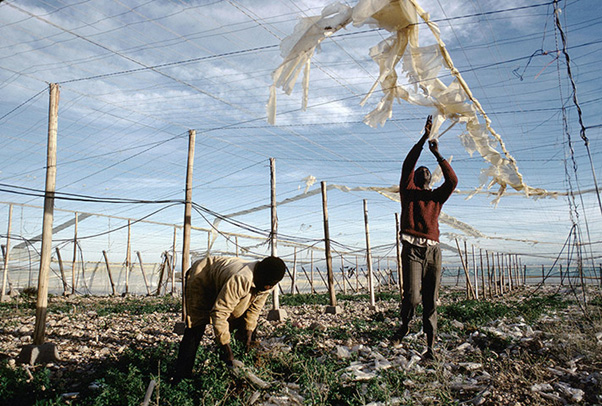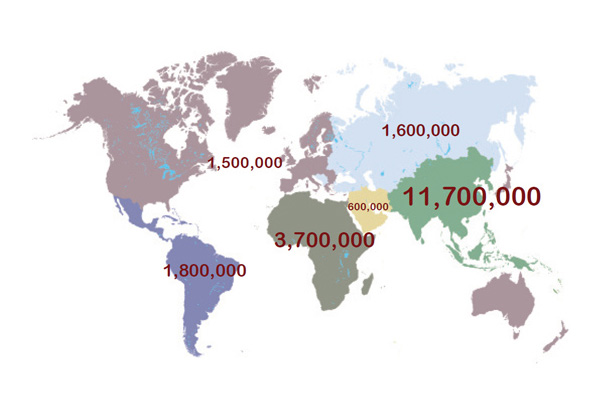Forced Labour, Human Trafficking and Slavery & the Requirement for Transparency in Supply Chains
Forced labour takes different forms, including debt bondage, trafficking and other forms of modern slavery.
The victims are the most vulnerable – women and girls forced into prostitution, migrants trapped in debt bondage, and sweatshop or farm workers kept there by clearly illegal tactics and paid little or nothing...
The victims are the most vulnerable – women and girls forced into prostitution, migrants trapped in debt bondage, and sweatshop or farm workers kept there by clearly illegal tactics and paid little or nothing...
Facts and figures
-
Almost 21 million people are victims of forced labour – 11.4 million women and girls and 9.5 million men and boys.
-
Almost 19 million victims are exploited by private individuals or enterprises and over 2 million by the state or rebel groups.
-
Of those exploited by individuals or enterprises, 4.5 million are victims of forced sexual exploitation.
-
Forced labour in the private economy generates US$ 150 billion in illegal profits per year.
-
Domestic work, agriculture, construction, manufacturing and entertainment are among the sectors most concerned.
-
Migrant workers and indigenous people are particularly vulnerable to forced labour.
Source: International Labour Organisation

What the data shows
Nearly 21 million people - Three out of every 1,000 people worldwide - are victims of forced labour, trapped in jobs which they were coerced or deceived into and which they cannot leave.

-
The Asia-Pacific region accounts for the largest number of forced labourers in the world – 11.7 million (56 per cent) of the global total, followed by Africa at 3.7 million (18 per cent) and Latin America with 1.8 million victims (9 per cent).
-
The number of victims per thousand inhabitants is highest in the central and south-eastern Europe and Africa regions at 4.2 and 4.0 per 1,000 inhabitants respectively. It is the lowest in the Developed Economies and European Union at 1.5 per 1,000 inhabitants.
-
The relatively high prevalence in central and south-eastern Europe and Commonwealth of Independent States can be explained by the fact that the population is much lower than for example in Asia and at the same time reports of trafficking for labour and sexual exploitation and of state-imposed forced labour in the region are numerous.
-
The Developed Economies and European Union have 1.5 million (7 per cent) forced labourers.
-
Central and south-eastern European countries, and the Commonwealth of Independent States account for 1.6 million (7 per cent).
-
There are an estimated 600,000 (3 per cent) victims in the Middle East.
Typology of forced labour
-
18.7 million (90 %) are exploited in the private economy, by individuals or enterprises. Of these, 4.5 million (22 per cent) are victims of forced sexual exploitation and 14.2 million (68 per cent) are victims of forced labour exploitation in economic activities, such as agriculture, construction, domestic work or manufacturing.
-
2.2 million (10%) are in state-imposed forms of forced labour, for example in prisons, or in work imposed by the state military or by rebel armed forces.
Profile of the victims
-
5.5 million (26 %) are below 18 years.
-
9.1 million victims (44 %) who have moved either internally or internationally. The majority, 11.8 million (56 %), are subjected to forced labour in their place of origin or residence. Cross-border movement is heavily associated with forced sexual exploitation.
How widespread is forced labour in the UK?
Forced labour in the UK is a significant, though hidden, and probably growing problem. Only the Gangmasters Licensing Authority (GLA) and National Referral Mechanism (NRM) have systems to record cases of forced labour. Provisional 2012 NRM figures show over 300 cases of adults and children trafficked for labour exploitation, roughly one-third of all referrals; 45 per cent of referrals were for labour exploitation and domestic servitude. This is an increasing proportion, overtaking other forms of trafficking.
Key Points
-
Available evidence suggests the number of people in the UK experiencing forced labour may run into thousands. Many are entitled to work here, being EU migrants and UK citizens.
-
Likely elements within forced labour include low-skill manual and low-paid work; temporary agency work; specific industrial sectors; and certain non-UK migrant workers.
-
There is evidence of forced labour in the industries covered by the Gangmasters Licensing Authority. However, forced labour is occurring in other sectors as well, including significant ones, such as care, construction and hospitality.
-
The definition and scope of forced labour are poorly understood, including differences between human trafficking, slavery and exploitation. Consensus is needed on forced labour indicators relevant for assessing the scope and scale of forced labour in the UK, and to assist legal proceedings. Relatively little case law exists.
-
Having a stand-alone offence of forced labour and servitude is helpful in separating the problem from that of trafficking people, as research evidence suggests that many victims of forced labour are not trafficked.
-
Forced labour and trafficking form part of more general labour exploitation, requiring effective criminal justice and workplace rights interventions, and not being seen as an immigration issue.
-
A strategic approach is needed to tackle forced labour, ensuring that the most vulnerable workers and sectors are properly protected.
-
Formal, transparent monitoring of the scope and nature of forced labour across the UK is also needed, including a comprehensive approach to data collection.
-
Workplace enforcement agencies currently focus on the most serious offences rather than wider labour exploitation; monitoring for such exploitation needs strengthening.